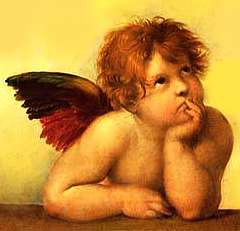The Sistine Madonna, created between 1513 and 1514 by the Renaissance master Raphael Sanzio, is a work that has transcended the boundaries of time and religion to become a universal icon of beauty and spirituality. The painting was commissioned by Pope Julius II for the monastery of San Sisto in Piacenza, as a personal tribute. Julius II belonged to the powerful Della Rovere family, and through this work, he sought to honor his family and religious devotion. The piece was made to be part of the high altar of the monastery church, a place that became its home for two centuries.
At this time, Raphael was at the peak of his career and was considered one of the greatest painters in Rome. With his distinctive style, characterized by the use of vibrant colors, balanced compositions, and refined elegance, Raphael sought to capture the ideal beauty in every work. The Sistine Madonna is a quintessential example of this approach, depicting the Virgin Mary and the Christ Child in a celestial scene, surrounded by symbolic figures and with an expression that conveys both sweetness and solemnity.
The work remained in the monastery of San Sisto until 1754, when it was sold by Pope Benedict XIV to Augustus III, the King of Saxony and Elector of Poland. Since then, the painting was moved to Dresden, Germany, where it is exhibited in the famous Gemäldegalerie Alte Meister. In Germany, the Sistine Madonna was appreciated for its virtuosity and beauty, and it became so influential that it even impacted thinkers and artists, who considered it a model of artistic perfection.
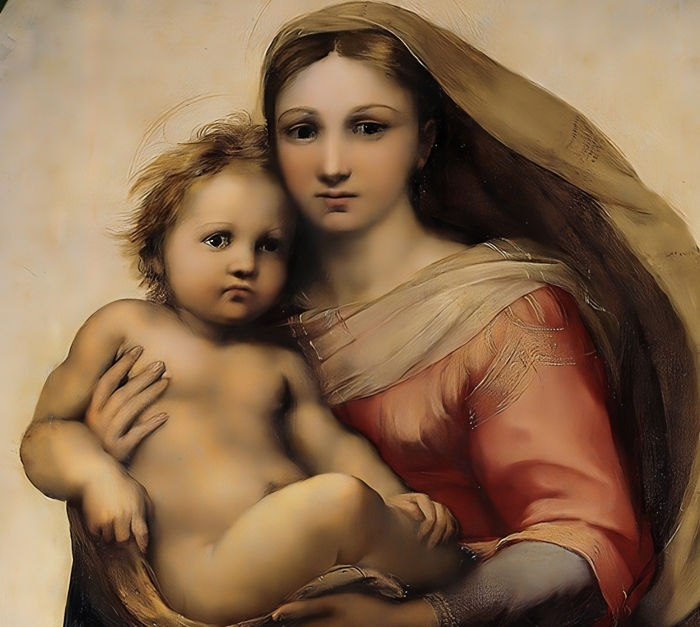
Description and Analysis of the Work
The painting depicts the Virgin Mary with the Christ Child in her arms, descending from heaven among clouds and surrounded by celestial light. Mary appears in a posture that evokes movement, with her blue mantle and warm-toned tunic seeming to float as she approaches the viewer. This image is the representation of the protective mother, appearing in an earthly world from the divine realm. The Virgin's expression is solemn and serene, conveying a feeling of maternal love and devotion to humanity.
To the left of the Virgin is Saint Sixtus, who gives the painting its name. This saint, one of the first popes in Christianity and a martyr, directs his gaze toward the viewer while pointing to Mary, as if presenting her. His gesture of humility and reverence makes him a mediator between heaven and earth, and his inclusion reflects the dedication of the work to the Church of San Sisto.
On the right side is Saint Barbara, who also looks downward, but instead of directing her attention to the viewer, she seems to observe the scene with an expression of calm and submission. Saint Barbara is recognized in Christian tradition for her bravery in martyrdom and is associated with divine protection, which adds a symbolism of strength and faith to the work.
At the base of the painting, on the lower edge, are the two cherubs or little angels, who have become one of the most iconic details of the painting. The little angels look up with a pensive and serene air, observing the scene with a carefree and almost playful demeanor. Although they form a small part of the work, they have become protagonists in modern reproductions and adaptations, appearing on postcards, posters, and decorative objects due to their charming expression and air of innocence.
The use of color in The Sistine Madonna is one of the most notable elements. Raphael uses a palette of warm and soft tones, with the deep blue of Mary's mantle contrasting with the reddish tone of her tunic, while the clouds behind the Virgin are painted in ethereal shades, creating a celestial atmosphere that elevates the main figures. The carefully balanced composition directs attention to the Virgin and Child, who, at the center of the scene, seem to be suspended between heaven and earth.
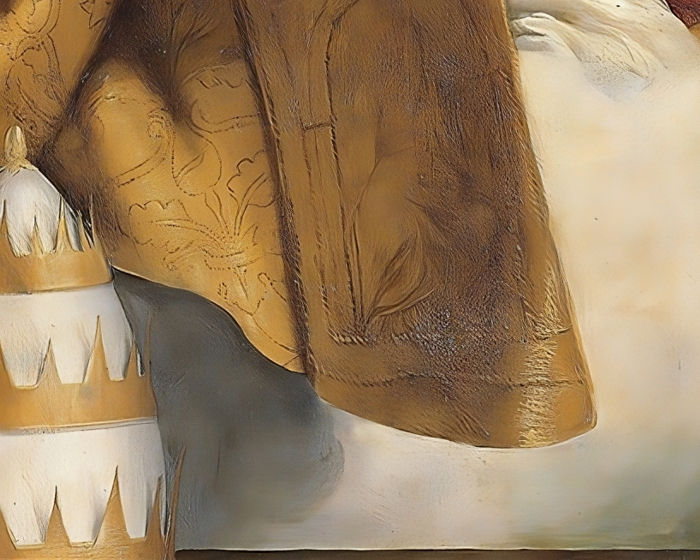
Symbolism of the Sistine Madonna
Every figure and every element in the painting has a symbolic purpose. The Virgin represents the mediation between the divine and human worlds; her calm expression and protective posture convey peace and devotion. The Christ Child, though small, has a penetrating and assured gaze, as if He understands the destiny that awaits Him and the sacrifice His mission entails. The gestures and glances of Saint Sixtus and Saint Barbara reinforce this sense of reverence and protection, while the cherubs observe with a mixture of curiosity and innocence, perhaps symbolizing simple devotion and the purity of love.
One of the most fascinating elements of the painting's symbolism is the way Raphael represents the divine space. The clouds upon which the Virgin floats seem to dissolve, suggesting that we are not seeing a tangible space, but a portal to a spiritual dimension. This visual device allows viewers of all eras to feel they are in the presence of something truly sacred and eternal.
Furthermore, the gazes of the figures generate a special connection with the viewer. Saint Sixtus and the cherubs look directly outward, creating a sense of proximity and closeness, as if every person observing the painting were part of the scene and its spiritual message. This invites contemplation and a feeling of communion with the divine.
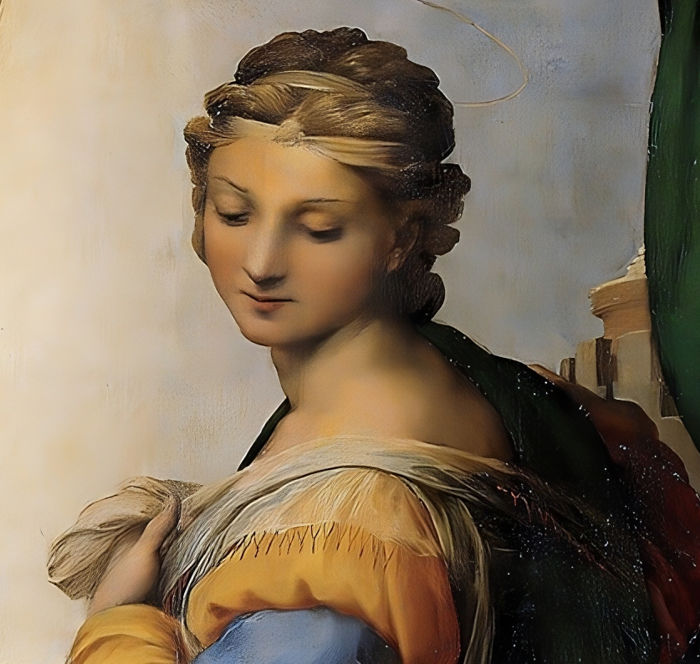
One of the most interesting aspects of the history of The Sistine Madonna is the fascination it generated in Germany once it was moved there in the 18th century. For centuries, the painting was considered a masterpiece, not only in the religious sphere but also in the artistic and cultural one. The German poet Goethe, among other intellectuals, expressed his admiration for this work, recognizing it as an expression of spiritual and aesthetic perfection. Goethe came to consider it one of the most sublime representations of the Virgin Mary.
The painting's transfer to Germany also brought with it a series of interesting stories about the little angels at the base of the painting. It is said that, at some point, the cherubs became so popular that their image was used in advertising, love letters, Christmas cards, and other commercial objects. It has even been mentioned that these cherubs inspired the creation of various cherub designs in the Victorian era, which demonstrates how a simple detail in a Renaissance painting can capture the imagination of entire generations.
Another curious anecdote related to the work occurred during World War II. The painting was removed and stored in a safe place to prevent its destruction during the Dresden bombings. After the war ended, the work was carefully restored and returned to its place in the museum, and its return was celebrated as a symbol of cultural resilience and European heritage. This event further highlighted the importance of the Sistine Madonna as a treasure of humanity.
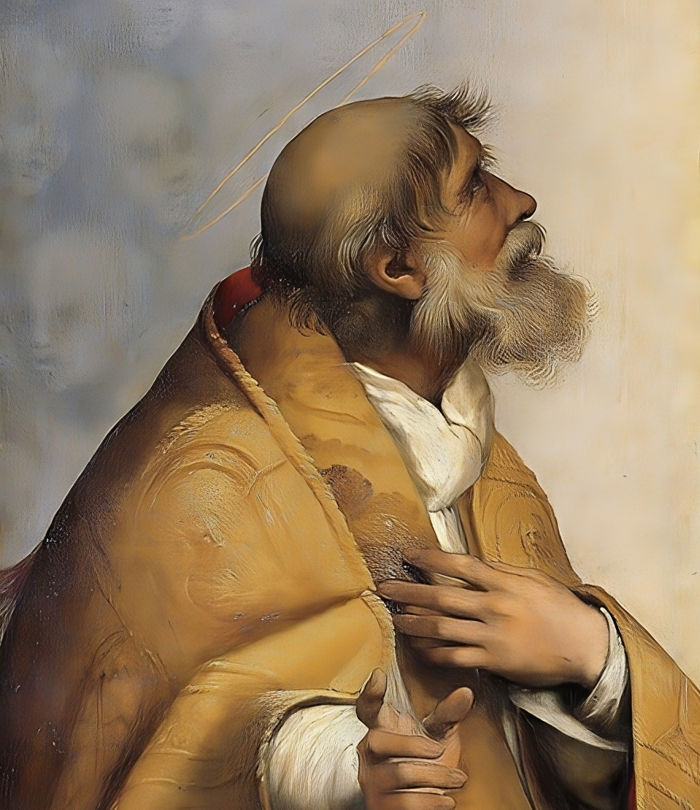
The Iconic Cherubs
The cherubs appearing in Raphael's Sistine Madonna are two of the most iconic and recognizable details of Renaissance art.
At the bottom of the painting, the little angels appear resting their faces in their hands and looking upwards, almost as if they were contemplating the celestial scene with a mixture of curiosity and calm. They were not the central part of the work, but they became extremely popular over time. Their relaxed posture, their thoughtful faces, and their carefree air captured the imagination of viewers. Although there are several theories, these small cherubs probably represent innocence and devotion, but they also add a human and approachable touch to the religious scene.
Over the centuries, these little angels have become a popular symbol on greeting cards, especially Christmas, love, and friendship cards. The reason for their popularity lies in their universally attractive expression and charm. Unlike many religious figures, these cherubs do not represent any specific doctrine, but a subtle and tender emotion, which allows them to be interpreted in many ways.
The little angels are also used on posters, cushions, mugs, and other decorative products. Their image has been employed to evoke feelings of peace, protection, and sweetness, and over time, it has become associated with what we recognize today as the classic aesthetic of cherubs in popular culture. Although they are not the protagonists of the work, the small cherubs have become some of the most popular and replicated details of Renaissance art. Here are some of the most well-known theories about these little angels:
1. Representation of Innocence and Curiosity
A common theory is that the little angels represent childlike innocence and curiosity towards the divine. In the work, the cherubs seem to be observing the celestial scene with a mixture of admiration and tranquility. This would symbolize how the human being, even in their innocence, feels an innate desire to contemplate and understand the sacred. The gaze of the little angels, of apparent calmness and curiosity, could reflect a simpler and purer form of faith and devotion, a connection with the divine that needs no explanation.
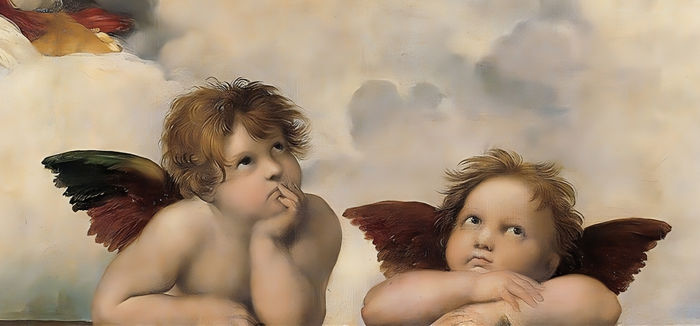
2. Allegory of Humanity at Different Ages
Another interpretation suggests that the two cherubs symbolize humanity at different ages and attitudes towards faith. The little angels, with their innocent faces and carefree posture, contrast with the solemn figures of the saints surrounding the Virgin and Child. This duality could be indicating how humans, from a young age and with a more playful focus, can still be part of spirituality and faith. The cherubs would represent youth who, unlike the rigidity of adults, observe the divine with a fresh and spontaneous perspective.
3. Symbolism of Children as Intercessors between the Divine and the Human
In Christian iconography, cherubs often appear as intermediaries between heaven and earth. According to this theory, the little angels could symbolize the intercessors who facilitate the link between humans and the Virgin, thus connecting the celestial sphere with the viewer. In this sense, the little angels would represent a kind of "spiritual bridge," a figure that makes the divinity of the Virgin and Child more accessible to the human being. Their relaxed posture gives them a mundane and close appearance, helping viewers relate more directly to the painting.
4. Inspiration from Real Children
There is a legend that suggests Raphael was inspired by real children he saw in his study or on the streets of Rome. According to this story, Raphael observed two children in a church looking up at the sky and resting their elbows on the altar similarly to how the cherubs do in the painting. Inspired by this image, Raphael would have included the little angels at the bottom of the work. Although this theory is difficult to verify, it is interesting to consider that the painter was inspired by everyday scenes, infusing them with spirituality to make the painting feel more human and accessible.
5. Representation of an Emotional Counterpoint in the Scene
The Sistine Madonna is a work charged with solemnity and reverence. The Virgin, the Christ Child, Saint Sixtus, and Saint Barbara are imposing figures representing holiness and devotion. The cherubs, in contrast, provide a more relaxed and almost comical tone to the scene. This theory holds that Raphael included the little angels to balance the intensity of the work, providing a dimension of lightness and reminding us that even in the solemnity of the divine, there is a place for joy and childlike wonder.
6. Influence of Neoplatonism and the Theory of Beauty
During the Renaissance, artists were deeply influenced by Neoplatonism, a philosophy that sought to unite the spiritual with the aesthetic. According to this perspective, the beauty and harmony of the physical world were reflections of divine perfection. Raphael's little angels, with their adorable and serene faces, could represent idealized beauty that is both earthly and celestial. Thus, the cherubs would be a symbol of purity and beauty that connects the divine with the human world, acting as emblems of spiritual perfection that invite the viewer to contemplate the work from an aesthetic and philosophical perspective.
7. Dual Symbolism of Hope and Contemplation
Another interpretation sees the cherubs as an expression of hope and contemplation. Their gazes upward and their relaxed poses contrast with the figure of the Virgin and the saints, who seem to be more focused on the solemn and divine aspect. The cherubs could, in this sense, represent humanity's hope of achieving a better world and its fascination with the unknown, suggesting that divinity can be contemplated simply, from a position of serenity and wonder.

The Legacy of the Sistine Madonna in Popular Culture
The Sistine Madonna has had a cultural impact far beyond artistic and religious circles. Its cherubs have passed into popular culture, and they are found on cards, postcards, and an endless number of decorative objects. In part, their popularity lies in their expression; while traditional religious figures usually have a solemn or angelic appearance, these cherubs have a relaxed and almost playful gaze, which makes them seem approachable and accessible.
Today, the Sistine Madonna is one of the main attractions of the Gemäldegalerie Alte Meister in Dresden, where thousands of people gather each year to admire this masterpiece by Raphael up close. The painting remains a perfect example of Raphael's ability to capture both idealized perfection and humanity, combining religious devotion with a deeply human connection that resonates through the centuries.
THE WORK
Sistine Madonna
Raphael Sanzio
Period: Renaissance
Date of Creation: 1512
Technique: Oil on Canvas
Genre: Christian Art
Size: 265 cm × 196 cm



